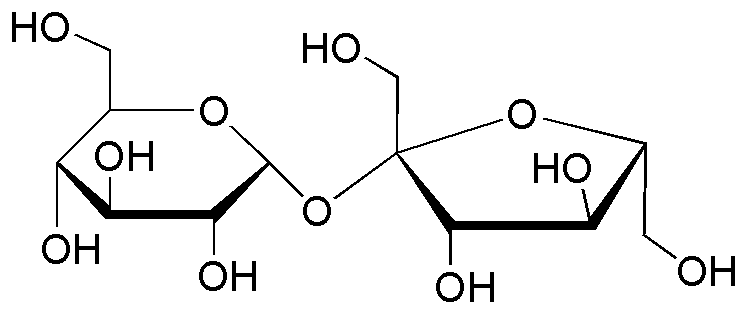Sucrose, Beet Derived is widely utilized in research focused on:
- Food Industry: Commonly used as a sweetener in various food products, enhancing flavor while providing energy. It serves as a key ingredient in baked goods, beverages, and confectionery.
- Pharmaceuticals: Acts as an excipient in drug formulations, improving taste and stability of oral medications. Its sweetening properties make it ideal for pediatric formulations.
- Biotechnology: Utilized in cell culture media to promote cell growth and viability. It provides essential carbohydrates for various cell lines, aiding in research and production processes.
- Cosmetics: Incorporated in skincare products for its humectant properties, helping to retain moisture in formulations and improve skin hydration.
- Fermentation Processes: Serves as a carbon source in fermentation, crucial for producing biofuels and bioproducts. Its fermentable nature supports the growth of microorganisms used in these processes.
General Information
Properties
Safety and Regulations
Applications
Sucrose, Beet Derived is widely utilized in research focused on:
- Food Industry: Commonly used as a sweetener in various food products, enhancing flavor while providing energy. It serves as a key ingredient in baked goods, beverages, and confectionery.
- Pharmaceuticals: Acts as an excipient in drug formulations, improving taste and stability of oral medications. Its sweetening properties make it ideal for pediatric formulations.
- Biotechnology: Utilized in cell culture media to promote cell growth and viability. It provides essential carbohydrates for various cell lines, aiding in research and production processes.
- Cosmetics: Incorporated in skincare products for its humectant properties, helping to retain moisture in formulations and improve skin hydration.
- Fermentation Processes: Serves as a carbon source in fermentation, crucial for producing biofuels and bioproducts. Its fermentable nature supports the growth of microorganisms used in these processes.
Documents
Safety Data Sheets (SDS)
The SDS provides comprehensive safety information on handling, storage, and disposal of the product.
Product Specification (PS)
The PS provides a comprehensive breakdown of the product’s properties, including chemical composition, physical state, purity, and storage requirements. It also details acceptable quality ranges and the product's intended applications.
Certificates of Analysis (COA)
Search for Certificates of Analysis (COA) by entering the products Lot Number. Lot and Batch Numbers can be found on a product’s label following the words ‘Lot’ or ‘Batch’.
*Catalog Number
*Lot Number
Certificates Of Origin (COO)
This COO confirms the country where the product was manufactured, and also details the materials and components used in it and whether it is derived from natural, synthetic, or other specific sources. This certificate may be required for customs, trade, and regulatory compliance.
*Catalog Number
*Lot Number
Safety Data Sheets (SDS)
The SDS provides comprehensive safety information on handling, storage, and disposal of the product.
DownloadProduct Specification (PS)
The PS provides a comprehensive breakdown of the product’s properties, including chemical composition, physical state, purity, and storage requirements. It also details acceptable quality ranges and the product's intended applications.
DownloadCertificates of Analysis (COA)
Search for Certificates of Analysis (COA) by entering the products Lot Number. Lot and Batch Numbers can be found on a product’s label following the words ‘Lot’ or ‘Batch’.
*Catalog Number
*Lot Number
Certificates Of Origin (COO)
This COO confirms the country where the product was manufactured, and also details the materials and components used in it and whether it is derived from natural, synthetic, or other specific sources. This certificate may be required for customs, trade, and regulatory compliance.

